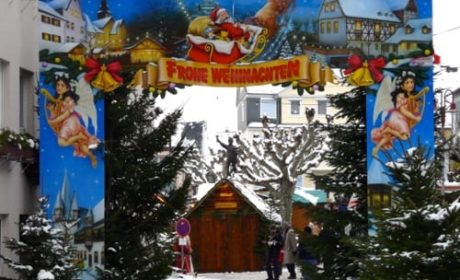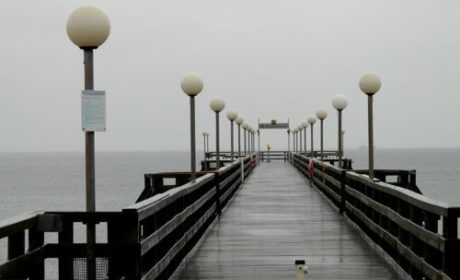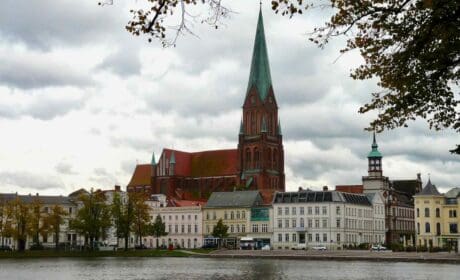European cities are filled with so much history that choosing what to see and do can be overwhelming. That’s certainly the case when it comes to visiting history in Berlin. Where do you start?
My Itchy Travel Feet featured writer, Debi Lander of ByLanderSea, reports on her trip Berlin, sharing her experience and tips for seeing the city’s historical sites. Create an independent Berlin history tour itinerary with Debi’s tips!
Thoughts of Germany bring visions of Octoberfest – the beer drinking festival, castles on the Rhine, and precision luxury automobiles. I’d visited Munich, the Black Forest, and Neuschwanstein Castle on previous European trips, but never Berlin, the capital of Germany.
Table of Contents
Visiting history in Berlin
The city becomes especially enticing for Baby Boomers like myself, who recall the days when it was sadly divided. We want to better understand the history and see the city’s remarkable transformation since the fall of the Berlin Wall.
The Berlin Wall

The story of the Berlin Wall remains confusing. After WWII, Germany was split into four occupation zones controlled by the Allied powers: the United States, the Soviet Union, the United Kingdom, and France.
Berlin, located in the Soviet zone, was also divided into East and West sectors. East Germany faced significant economic challenges. The exodus of East Germans to the more prosperous West became a major concern for the communist government.
On the night of August 12-13, 1961, East German authorities, with Soviet approval, began constructing the Berlin Wall. Barbed wire and concrete barriers were initially erected, and over time, a more sophisticated and formidable structure emerged. It grew to a 100-mile fortified concrete barrier that encircled and isolated West Berlin from East Germany.
The Berlin Wall acted as the dividing line between capitalism and communism. The perimeter was under the constant surveillance of armed East German border guards who were authorized to shoot anyone attempting to escape into the democratic West. Unfortunately, many died trying all sorts of intriguing tactics.
In the late 1980s, the Soviet Union underwent reforms, and the policies of Soviet leader Mikhail Gorbachev allowed for greater political openness. Over time, the political climate slowly warmed and the world witnessed the start of the Wall’s demolition on November 9, 1989. Eleven months later, East and West Germany were reunited.
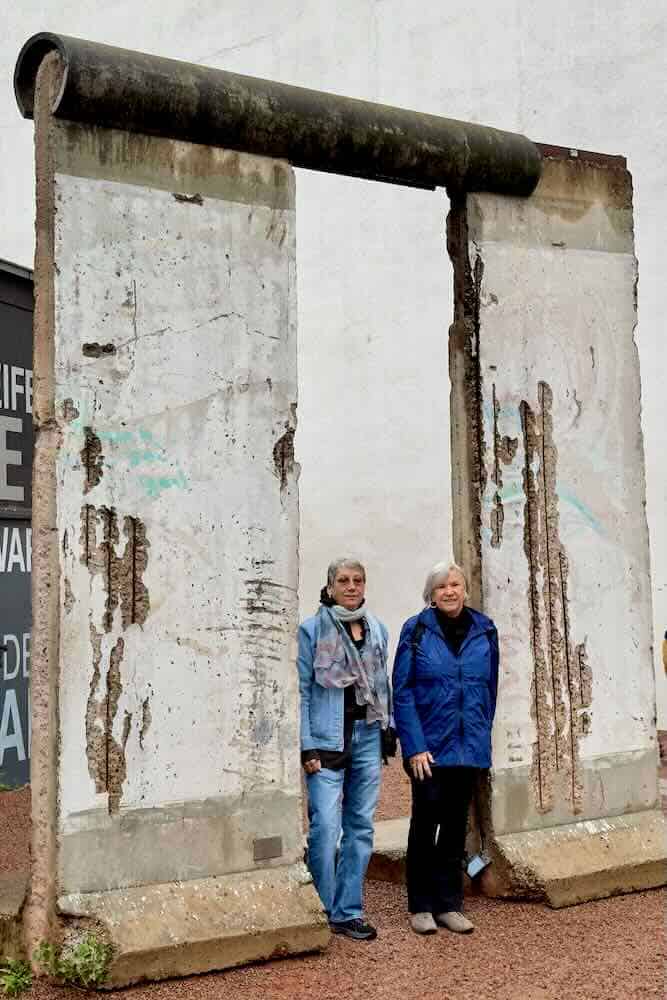
The city keeps remnants of the Berlin Wall, known as the Berlin Wall Memorial (website), as vivid reminders of the divided past, not just for those who remember the times, but those who were not yet born.
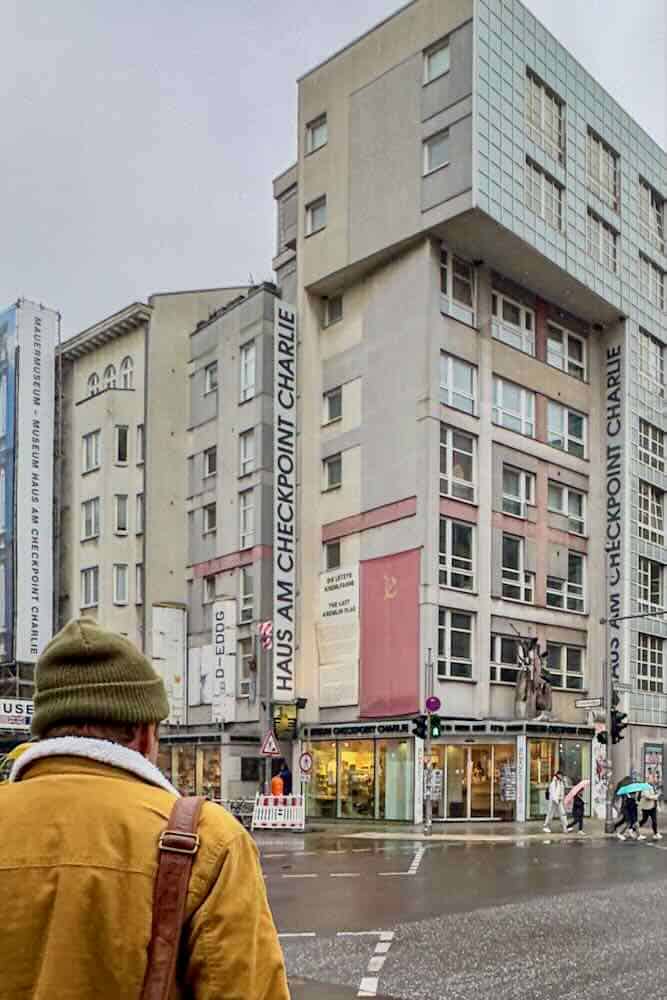
My travel buddy, Judy and I started our look at Berlin history with a visit to Checkpoint Charlie, the tense border crossing during the Cold War. I stood at the epicenter, the same ground where East and West faced each other, and it sent chills down my spine.
We also toured the Wall Museum (website), filled with memorabilia, newspaper articles, photos, and videos of both incredible escapes pulled off with heroic efforts and heartbreaking, tragic tales.
Boomer Travel Tip
MedjetAssist Members who are hospitalized 150 miles from home receive medical transport to a home-country hospital of choice. Memberships from $99.
Brandenburg Gate

Judy and I later walked through the Brandenburg Gate, the neoclassical icon of the city, and now the symbol of united Germany. I hadn’t realized its resilience.
The Brandenburg Gate was constructed in 1788 and has withstood many changes in government. Think of the decades since royal rulers, the Napoleonic era, the rise and fall of Adolf Hitler and the third reich, the Cold war, and democracy.
Museum Island
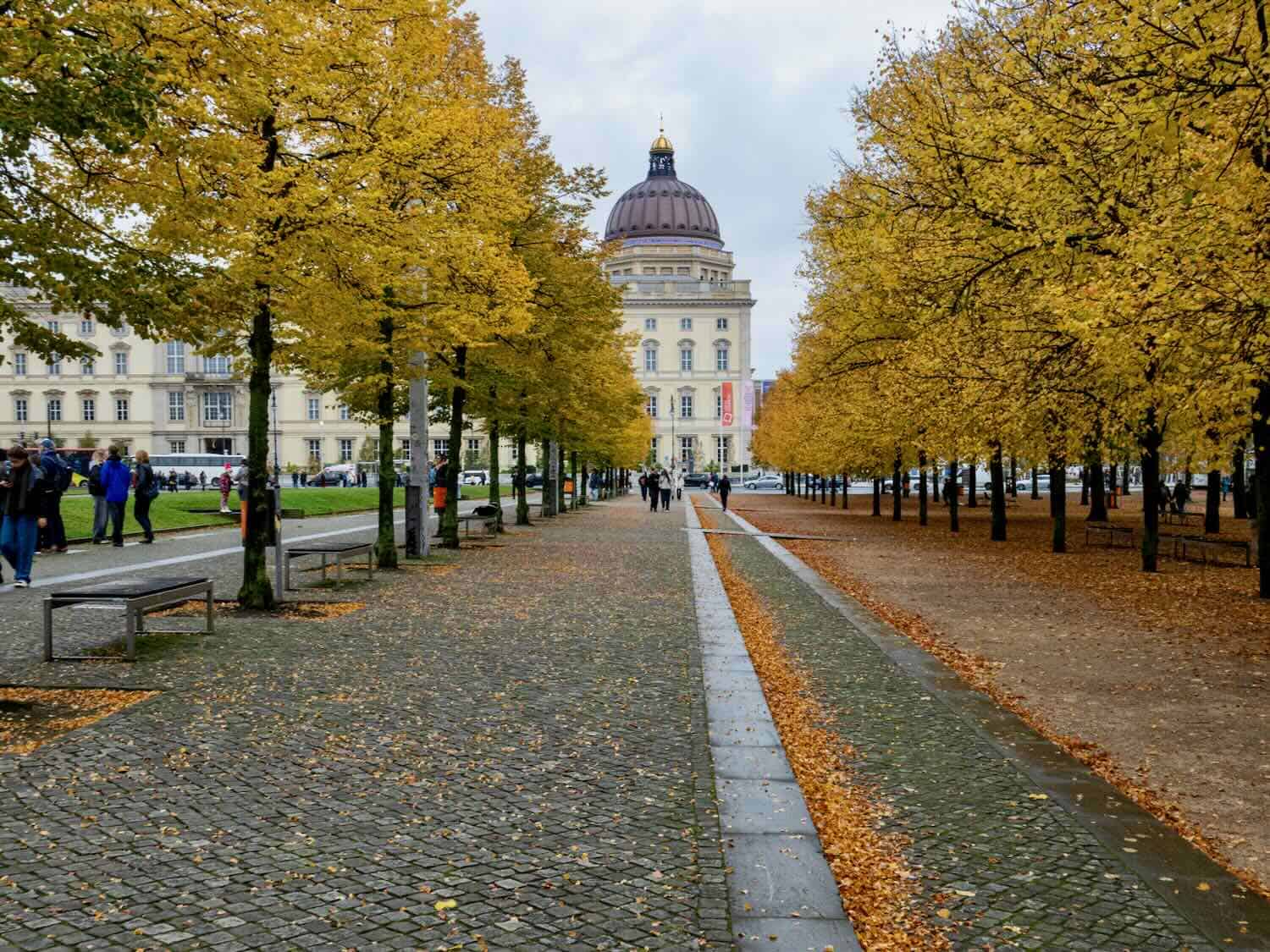
Today, the energetic city of Berlin feels alive and thrives with much more than Cold War history. Downtown’s Museum Island, a UNESCO World Heritage site, offers visitors five major world-famous museums: Altes Museum housing a collection of antiquities, Neues Museum holding Egyptian collections and artifacts from pre-history, Alte Nationalgalerie displaying paintings and sculptures, Bode Museum hosting sacred art from Byzantium, and Pergamon Museum housing archaeological finds from antiquity.
The impressive buildings house fantastic collections of ancient artifacts and modern art. (One could spend days there.) In the Neues Museum, I especially enjoyed viewing the beautiful bust of Nefertiti, which is over 3,000 years old. I also appreciated the architectural details built into the rooms using authentic pieces like columns, entry gates, and statuary. FYI: The famous Pergamon Museum recently closed for major renovations.
The still standing royal cathedral (Berliner Dom) also remains on Museum Island, a particularly photogenic building.
Humboldt Forum
Not far from the Museum Island, between Alexander Platz and the Brandenburg Gate, you’ll find the Humboldt Forum, part of Humboldt University. Since opening to the public 2021, the Humboldt shines with permanent Ethnological Collections and the Museum of Asian Art.
In the Palace Cellar, Sculpture Hall and Video Panorama, we watched the history of the metropolis and ate lunch at one of the five restaurants.
Berlin TV Tower
The Berlin TV Tower stands out and is easily recognizable. However, I visited on a rainy day and could only see its tip poking through the fog. Visitors can go up the tower to capture city views, particularly recommended is the illuminated night sky.
Memorial to the Murdered Jews of Europe
Close to the Brandenburg Gate in the heart of Berlin you will find the Memorial to the Murdered Jews of Europe. Spend some time at this somber but important holocaust memorial. As you watch others walk through the grid-like layout of 2,711 concrete slabs they descend, appearing to disappear as did the victims in the second world war.
The area is open day and night, and from all four sides, so you can fully immerse yourself in the spatial structure. The memorial is different wherever you stand. The uneven concrete floor gives many a moment of uncertainty.
The sheer size of the installation and its lack of a central point of remembrance call into question the conventional concept of a memorial. This creates a place of remembrance, a place of contemplation, and warning to not forget. The design comes from New York architect Peter Eisenman, and was ceremonially opened in 2005.
The Jewish Museum
We also spent an afternoon in the extraordinary Jewish Museum. Pace yourself, or better yet, research the museum before going, as we spent more time in areas we might have skipped and reserved for others that got shortchanged. The museum covers a vast range of Jewish history.
Ku’ Damm Area
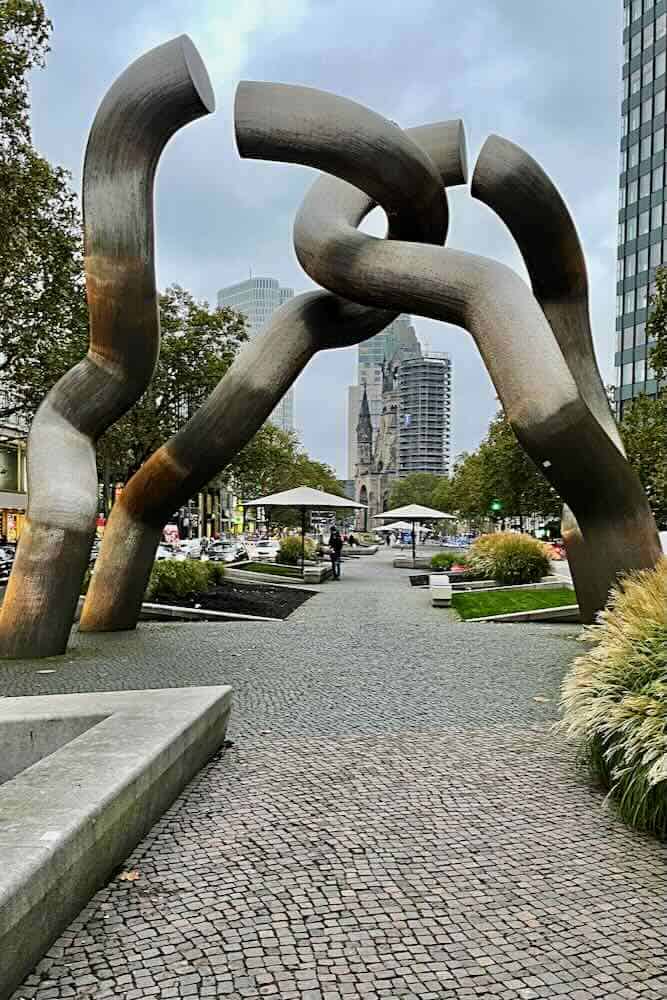
Very close to our hotel stood the ruins of the former King’s Church, Kaiser-Wilhelm Kirche, whose damaged tower roof is one of the best-known historical landmarks in Berlin. Attached is a small museum and a new blue-glass octagonal church.
Nearby rests the modern statue simply named Berlin. It’s a “broken chain” meant to symbolize the severed connections between West and East Berlin, their closeness yet isolation on each side. (It also reminds me of German pretzels!)
More history to see in Berlin
I only had a few days in the city so didn’t fit in a visit to the Reichstag Building , the seat of the German Parliament. Visitors can take a guided tour to explore the interior of the parliament building, including the glass dome, which offers panoramic views of the city.
I also would have loved to visit Charlottenburg Palace, a baroque-style palace with lush gardens that give visitors a glimpse into the city’s royal history. I missed its opulent rooms and the magnificent Orangery.
Berlin food scene
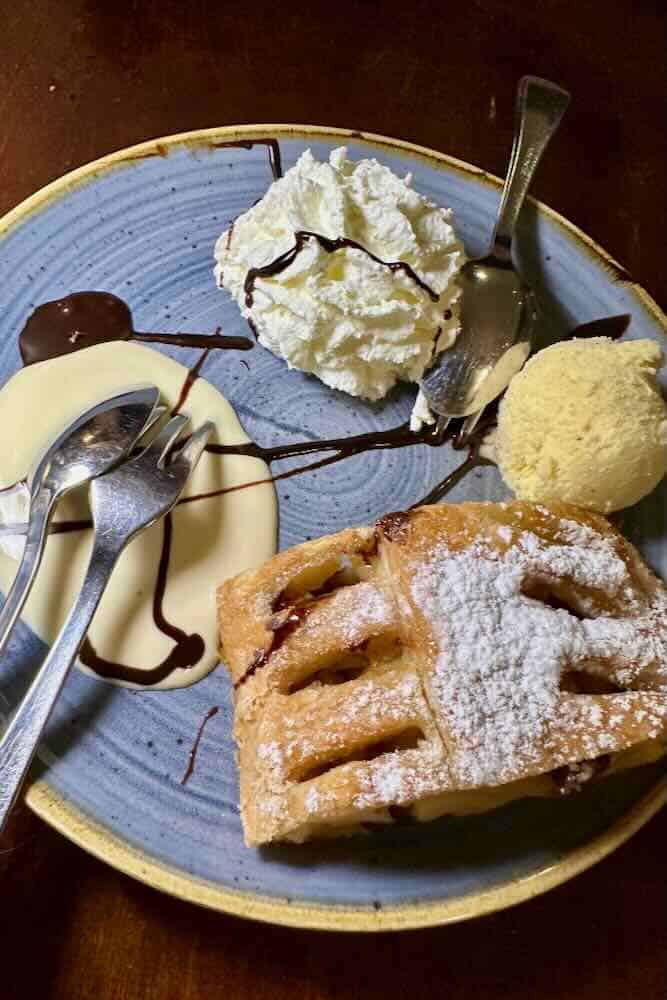
In addition to those yummy German pretzels and beer, Berlin’s culinary scene bursts with a vast array of international flavors and traditional German cuisine.
The luxury department store KaDeWe, similar to Harrod’s in London, showcases a gourmet food hall and restaurants covering over 7,500 square feet on the top floor. You can grab a fast bite here, or sit down for full restaurant service.
My late fall visit did not include a local beer garden, but you’ll find many open on warm days. We enjoyed classic German dishes, such as scrumptious schnitzel, the most amazing red cabbage, and my favorite warm apple strudel with ice cream in a typical Gast Haus or pub.
I’m positive Berlin has a busy nightlife, especially for the younger crowd. But I can’t report as I’m one who goes to bed fairly early.
Getting around Berlin
We arrived in Berlin on a train from Cologne. The main train station is enormous, almost overwhelming, as it’s an international hub.
While in the city, I used the excellent public transportation system including buses and trains to zip around. They proved easy and affordable.
While riding, I noticed a number of greenways and public parks in every part of the city. We used our Welcome Card (get it here) which included public transportation as well as museum admissions: .

One day, we hopped on a train for a day trip to Potsdam to visit Sansscouci Palace, about half an hour away. Touring the immense complex is like visiting Versailles near Paris, so be prepared for lots of walking and gobsmacking gold.
The grounds include multiple opulent royal palaces, meticulously landscaped gardens, and a fascinating glimpse into Prussian history. More on Sansscouci coming in another post.
About Berlin Hotel stay
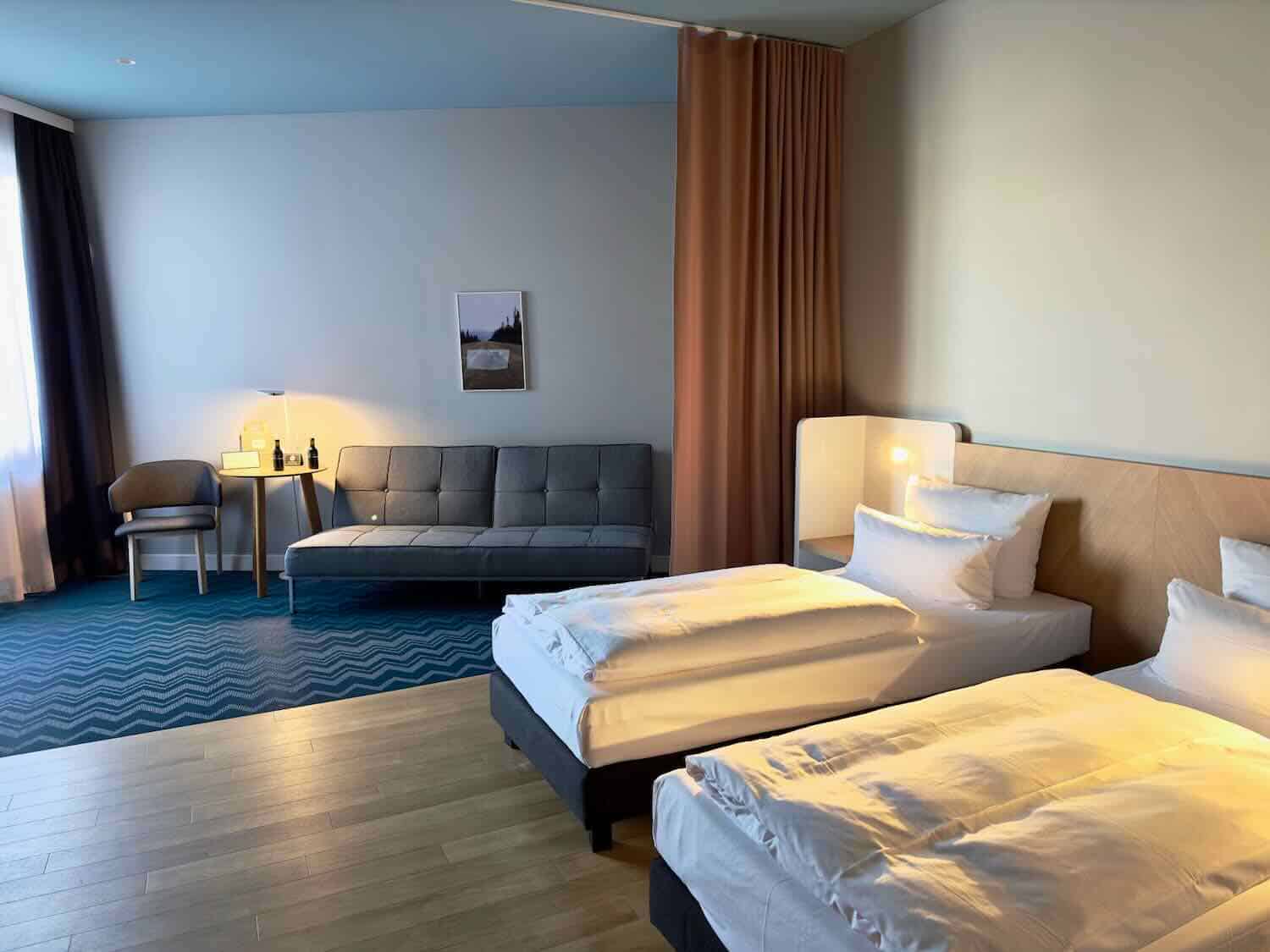
I don’t typically write about my hotel stays, but Berlin was exceptional. We stayed in the heart of the city at a wonderful hotel with an unusual name. It’s called the About Berlin Hotel, not to be confused with the Berlin Hotel.
You can easily pass the hotel entrance because it fits into the Ku’Damm area, right in the middle of the shopping district. You enter the hotel by walking down a hallway, then take the elevator to the fifth floor. When the doors open, you find a delightful airy living room, the breakfast/dining area, a self-serve honor system bar, and 24-hour manned check-in desk.
The rooms are designed to be minimalist, but are spacious and include everything needed. We had a sofa and area to sit and enjoy a bottle of wine, or the cocktail we made in the self-serve bar. The bathroom was plenty big and the sleeping area (with comfy beds) had plenty of electrical outlets for charging phones, camera batteries, and ipads/computers.
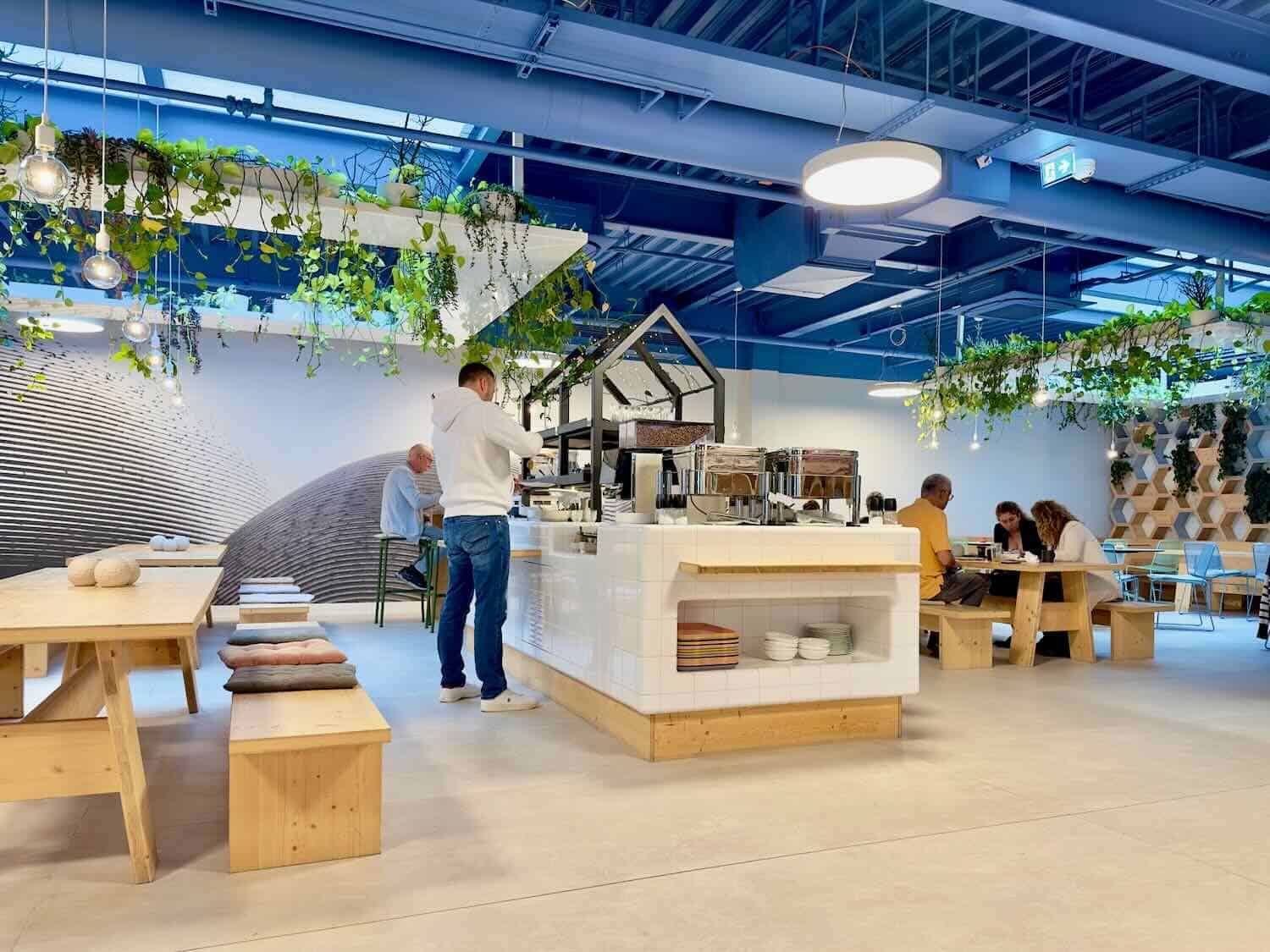
The included breakfast buffet was outstanding with a fabulous choice of breads, cheese, variety of eggs, and cereals. Best part, however, was walking out the door and finding yourself steps from whatever: the bus or subway, restaurants, shops and big specialty stores, Ka De We department store, or some historic building or attraction. The location couldn’t be any better. And, the price was most reasonable.
We found Berlin much more than just a contemporary city for baby boomers. It’s full of younger people engaging in vibrant workplaces on lively streets filled with pop art, culture, and diverse activities. It’s a blend of history and modernity that provides an unforgettable experience and leaves a lasting imprint on those who visit.
Would I return to see more? Absolutely.

